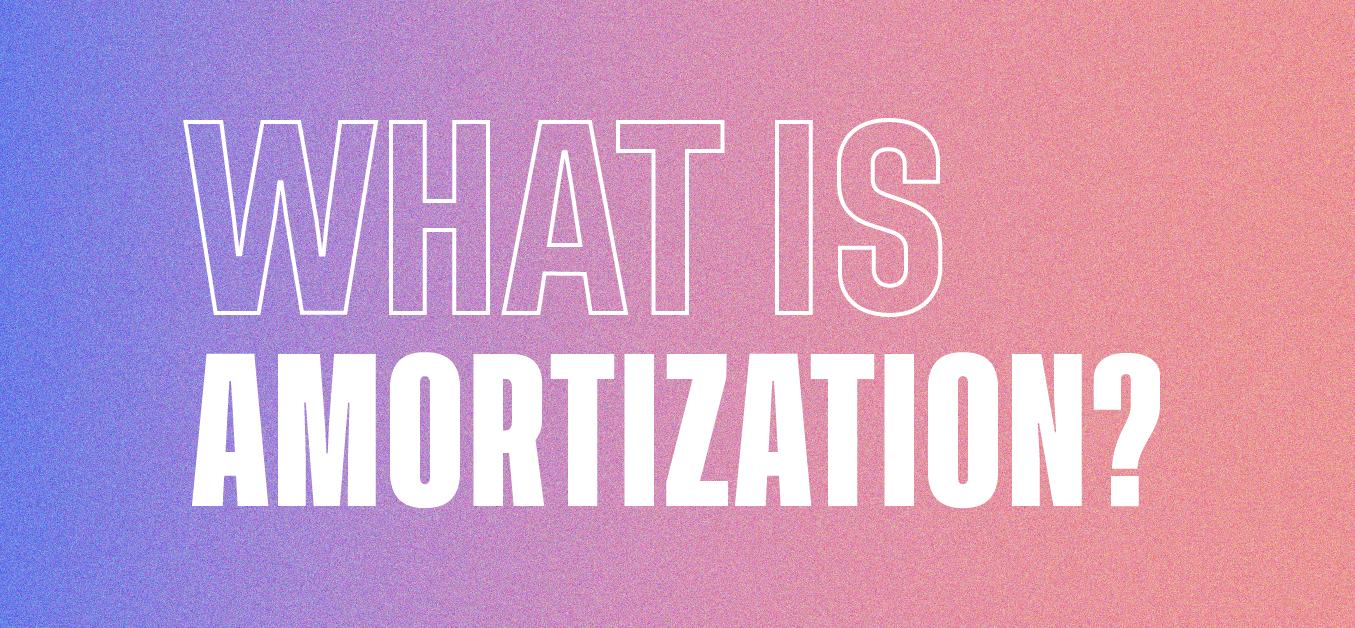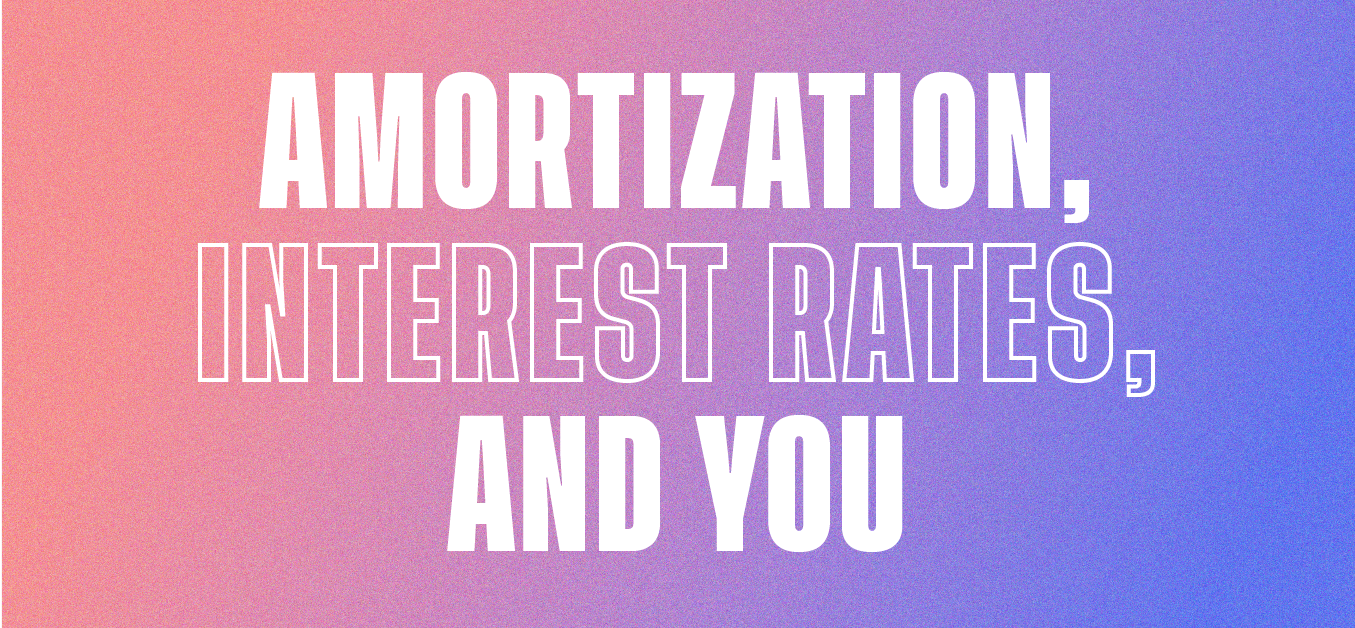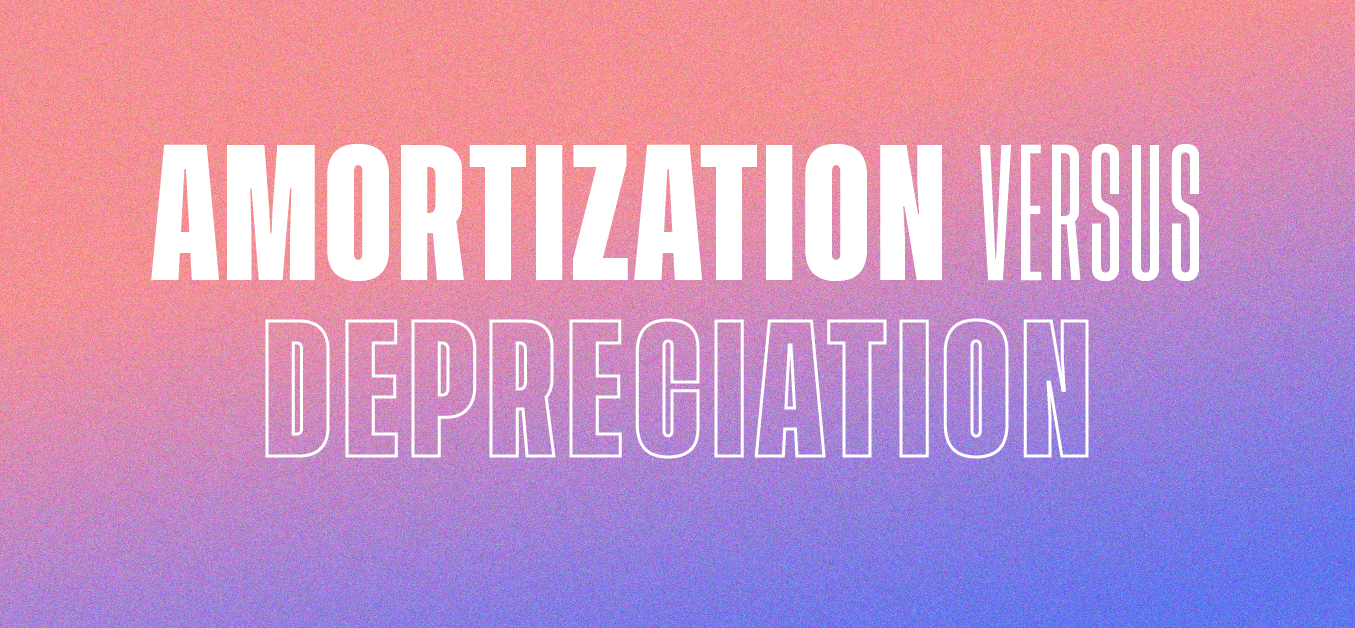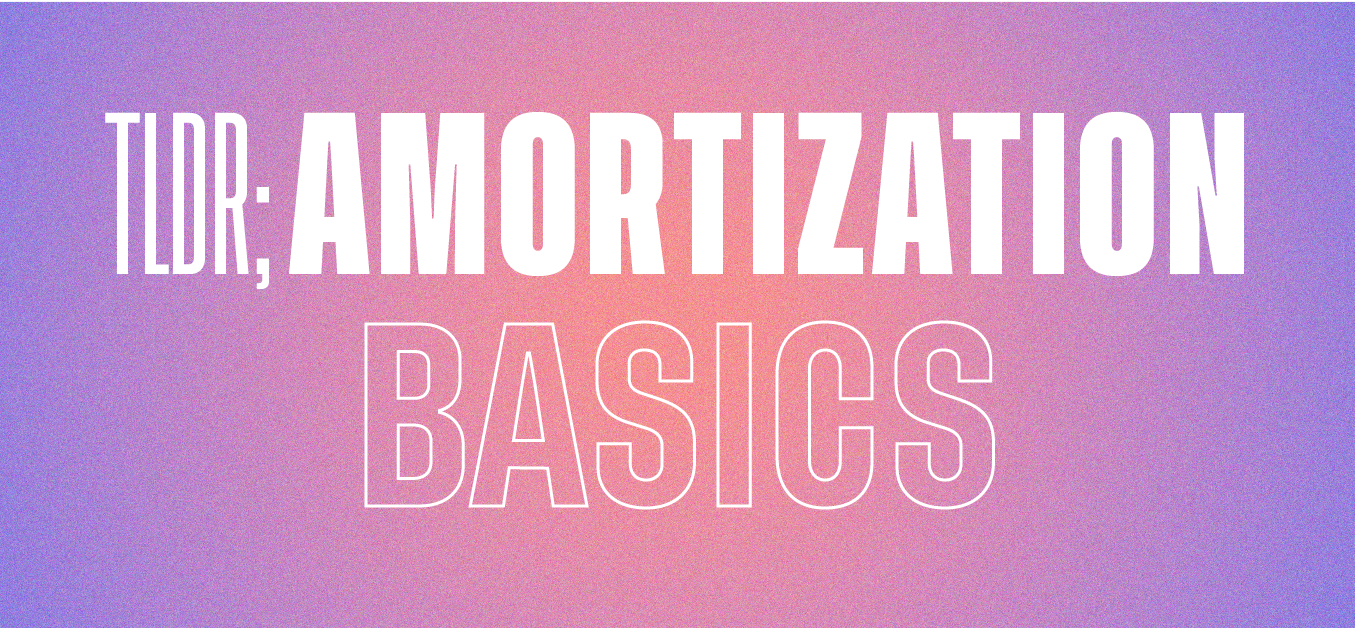What is Amortization?
Let’s get back to basics! This series unpacks commonly misunderstood terms so you can level up your financial vocab.
Have you heard the term “amortization” before?
You probably have. From business tax strategy to procuring your own personal mortgage, amortization is a concept with sprawling reach.
So what does it mean?
The good news: the concept itself is simple to understand.
The bad news: like everything in finance, the practical applications of the concept are more complicated. We’ll get to that later.

Amortization is the practice of spreading the cost of something over a fixed period of time.
Say you get yourself a mortgage worth $500,000. Congratulations! You can buy a 30 year old, 100 square foot, basement apartment in Vancouver that boasts a windowless bedroom. 🙃 #bitter #housingcrisis #avocadotoast
If you’re like most Canadians, you probably don’t have $500,000 lying around. To make things like home ownership possible, banks give out loans (mortgages) you can use to pay for the upfront cost of a home. But since there is no such thing as a free lunch (or house!), you have to pay the loan back over a predetermined period of time.
Only instead of paying $500,000 to your bank all at once, you might pay $500,000 plus 1.5% interest over the course of 30 years.
This repayment timeline is called your amortization schedule. Your amortization schedule will be included in the terms of the loan agreement you’ll receive when you’re approved for your mortgage. This schedule covers the period of time from when you receive the loan up to your loan’s maturity date, which is the date your loan becomes due in full.
That is the basic idea behind amortization. Specifically: amortization is the process used to pay off or reduce a debt by making regular payments over a specific period of time.

Your loan, such as a mortgage, will include a principal balance and the applicable interest rate on your loan to be paid over the course of your amortization period. Using the example above, if your loan was $500,000 today and accrued interest at a rate of 1.5%; you’d be expected to repay this amount most commonly using monthly or bi-weekly instalments by the loan’s maturity date, 30 years from now.
That is… *tries to do simple math badly*... wait no, that can’t be right. 2051??? What?? 2051 can’t be so soon. Shouldn’t we already have flying cars by now??? Or at least like… not so many friggin’ problems??
That’s an existential problem for another blog post! 🥴 Anyways!
So: your amortization schedule can also dictate which amount you’re paying down faster, the interest owing on your loan or the principal amount of your loan.
This has implications for your loan.
Consider, for example, paying down debt on your credit card. Generally, the principal balance on your credit card will be amortized using a monthly minimum payment.
But minimum payments cover little more than the accumulated interest owing, not your principal balance. The longer your principal balance remains outstanding, the more you will owe in interest. This is one way that credit card companies make money.
Conversely, when considering mortgage amortization schedules, a greater portion of your payment instalment amounts may be allocated to the interest owing, as it’s when your principal is the largest that you’ll accrue the most interest. Over time, a greater percentage of your payments are allocated to tackling your principal balance.
Further, your amortization period (360 months for your imaginary house) is fixed for the bank’s benefit. In locking into a 30 year amortization schedule, the bank is essentially guaranteed a certain amount of interest owed. If you were able to pay off huge portions of your mortgage yearly, the bank would earn less money. For this reason, there’s often limits on how quickly the bank will allow you to pay off your mortgage.
When you have a loan or mortgage, it’s usually best to take advantage of “free payments” or extra instalments. These are sometimes referred to as “prepayment privileges”. The faster you pay down your loan, the better—even if it’s amortized over 30 years.

There’s a flip side to amortization too. Not related to mortgages or credit cards, amortization can also refer to a method of spreading an intangible asset’s cost over that asset’s “useful life.” This method is mostly pertinent to businesses.
Basically, amortization of an intangible asset (something like copyrights or trademarks, big ticket business purchases like that) allows a business to spread the purchase price of that asset over the entire period they’ll be using it.
This practice can reduce the businesses’ total tax liability.
Amortization is different from depreciation in two major ways.
Amortization generally expenses a fixed amount over the useful life of the asset, meaning the same amount of money every month.
Depreciation refers to fixed assets, like buildings or equipment. These are expensed at variable rates depending on the nature of the depreciation. Further, at the end of use of a fixed asset, they may be sold. Generally, this doesn’t apply to intangible assets; they have limited resale value.
Basically, tax stuff for bizness! Badabing badaboom, reducing tax liability.

Amortization is all about spreading out the cost of an item over time. You’ll see this word around mortgages especially, but also other types of loans too. Amortization schedules allow you to access loans, but they’re also designed to earn the lender money via interest. This is why most loans can cost you money in the long run.
So, we encourage you to always be mindful and critical when entering into a loan agreement. But you knew that, didn’t ya?
This blog is provided for informational purposes only and should not be considered financial advice.